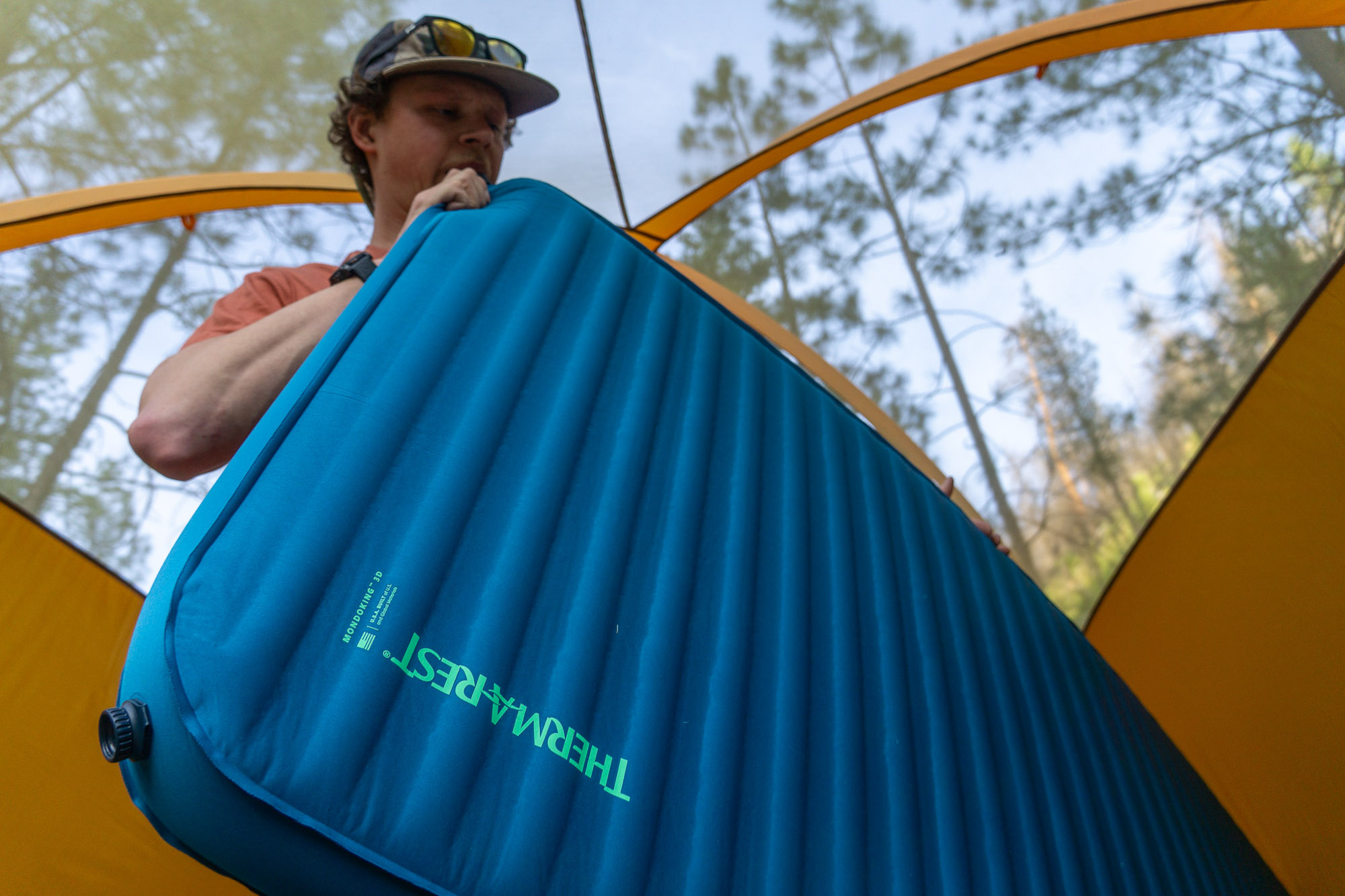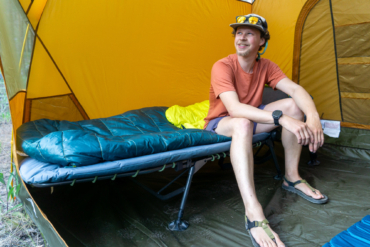A sleeping bag liner might feel a little overkill after spending a pretty penny on a beautiful sleeping bag, but once you’ve used one, it’s hard to go without.
Liners act as an extra barrier between you and your bag, or you and questionable hostel blankets. If you’re wondering what all the fuss is about liners or trying to decide on which one to get, you’ve come to the right place.
Why Use a Sleeping Bag Liner?
Once you understand all the benefits of having a suitable sleeping bag liner, it’s not hard to understand why people love them.
Insulation: On colder nights or while winter camping, liners can add that extra warmth you need to stay cozy without having to shell out for an entirely different sleeping bag. Similar to layering clothes, a liner acts as another layer of your sleep system to trap air close to your body and keep you warmer.
Of course, not all liners provide equal warmth. How much extra warmth your liner provides largely depends on material and construction (we’ll get to that).
Warm-weather sleeping: On hot summer nights, your 15-degree sleeping bag may feel a bit stifling. Even with it unzipped, you still may wake up sweating. On those nights, a light, breathable liner might be all you need to sleep soundly. Plus, taking just the liner with you will cut down on weight.
Cleanliness: After a long day hiking through the backcountry, you may not want to meticulously clean your stinky feet, and you definitely don’t want to climb into a grimy sleeping bag. A sleeping bag liner keeps your funk separate from your sleeping bag.
Post-trip, you can simply throw the liner in the washing machine, and you’re ready for another trip at full cleanliness. While you could just wash your entire sleeping bag, that’s a lot more work, and it will wear down your bag quicker.
Protection: Along similar lines of cleanliness, a liner is great for traveling in mountain huts or hostels because it acts as a shield from potentially grimy blankets or bed bugs. In fact, many mountain huts in Europe and some hostels require that you bring your own liner to protect yourself and future guests.

Types of Bag Liners
The two main factors you want to think about when buying a liner are shape and material.
Shape
Most liners are either mummy-shaped (narrower at the feet) to slip right into your mummy bag or rectangular to allow for more space to move around. You can get various spin-offs of these shapes — like hoods, pillow extensions, or extra-long versions — but, in general, these are the two main shapes on the market.
Mummy liners, with better insulation and less fabric, cater more to backpackers or lightweight enthusiasts. Rectangular liners are best for traveling and those who just want the extra comfort to move their legs around more.
Materials
Silk: Silk is an excellent material for liners because it’s lightweight, compact, and can be both insulating and breathable — depending on what you need. Plus, it’s just got a wonderfully soft next-to-skin feel. Silk dries fairly fast but can absorb and retain moisture. If moisture is a major concern, you may want to consider synthetic fibers, which we discuss below.
Another downside of silk liners: they can get pricey. Sea to Summit’s Premium Silk Traveller Liner might be the best option in this material if you’re willing to pay the price. But for the investment, this liner has a nice next-to-skin feel with durable ripstop silk that’s machine washable along with stretchy side panels for better movement.

Cotton: On the more budget-friendly side of things, cotton is sturdy, cozy, and decently insulating on cooler nights. On the downside, it’s heavier and less compact than other options. It also dries very slowly and is cold when wet.
Because of this, you should only use cotton liners when moisture is of no concern, which takes it out of the running for most camping uses. One example is Cocoon’s Cotton Bag Liner, which is 100% cotton and adds 5 degrees Fahrenheit of warmth.

Synthetic: Encompassing fleeces, microfleeces, Coolmax, and other synthetic insulating materials, there’s a lot of variety in this category. You can get some of the most insulating liners with something like the Sea to Summit Thermolite Reactor Extreme, which claims to add 25 degrees Fahrenheit of warmth to even the best sleeping bag. Most synthetics are very fast-drying and fairly light, so they’re a good all-around choice for sleeping bag liners.

They can also be more breathable like the Coolmax fabric in Cocoon’s travel sheet, which is extra-breathable and designed to move sweat away from your body. Another nifty feature some liners now have is insect shield technology that repels mosquitoes, ticks, flies, and fleas without any bad smells.
Wool, alpaca, and more: Of course, there are other materials used to make sleeping bag liners, but a few of note are wool and alpaca fibers. These are both good insulators that add warmth even when wet. And both have natural antimicrobial properties that help them fight stink. This alpaca sleeping bag liner sells out every time a new batch becomes available!

For any future camping or hostel excursions, if you want to increase your chances of staying clean, cozy, and safe, you’ll want to consider a sleeping bag liner. While there are plenty of varieties and prices, the most important thing is to have one that suits your needs and lets you sleep soundly — whether you’re in a hostel or on the side of a mountain.






